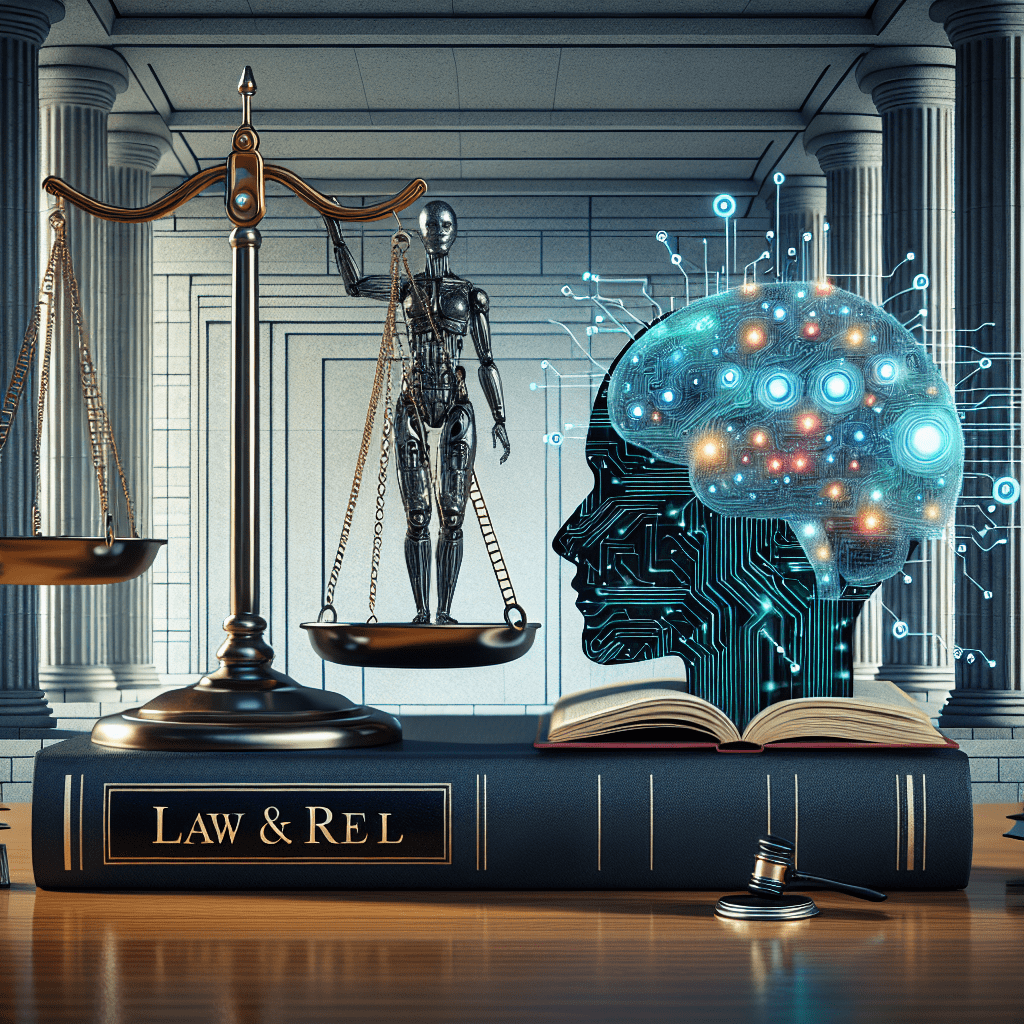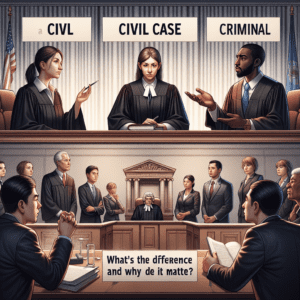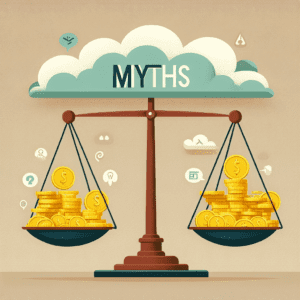“Navigating the Legal Maze: Can Congress Truly Regulate AI?”
The Constitutional Limits of Congressional AI Regulation
As artificial intelligence continues to evolve at a rapid pace, lawmakers in the United States face increasing pressure to establish regulatory frameworks that address its potential risks and benefits. However, while Congress has the authority to legislate on a wide range of issues, the regulation of AI presents unique constitutional challenges that complicate the process. The limits of congressional power, as defined by the U.S. Constitution, raise important questions about the extent to which federal lawmakers can impose restrictions on AI development and deployment without overstepping their legal boundaries.
One of the primary constitutional constraints on congressional AI regulation stems from the Commerce Clause, which grants Congress the power to regulate interstate commerce. While AI technologies often involve interstate and even international transactions, certain aspects of AI development—such as research conducted within a single state—may fall outside the scope of federal authority. This raises concerns about whether Congress can impose broad regulations on AI without infringing on states’ rights. If AI applications are deemed to be primarily intrastate in nature, individual states may argue that they, rather than the federal government, should have the authority to regulate them. This tension between federal and state power could lead to legal challenges that test the limits of congressional authority.
Additionally, the First Amendment presents another significant hurdle to AI regulation, particularly in cases where AI-generated content is involved. Many AI systems, including large language models and generative AI tools, produce text, images, and other forms of media that could be considered speech. If Congress were to impose restrictions on AI-generated content, such regulations might be challenged on the grounds that they violate the First Amendment’s protections of free expression. Courts would then need to determine whether AI-generated speech is entitled to the same constitutional protections as human speech, a question that remains largely unsettled in legal discourse.
Beyond free speech concerns, the Due Process Clause of the Fifth and Fourteenth Amendments also plays a role in shaping the legal boundaries of AI regulation. If Congress enacts laws that impose strict liability on AI developers or users without clear guidelines, such regulations could be challenged as unconstitutionally vague. The principle of due process requires that laws provide sufficient clarity so that individuals and businesses can understand what is prohibited or required. Given the complexity of AI systems and their unpredictable nature, crafting regulations that meet this standard while effectively addressing AI-related risks presents a significant challenge for lawmakers.
Moreover, the Takings Clause of the Fifth Amendment could come into play if AI regulations impose severe restrictions on the use of AI technologies in ways that diminish their economic value. If Congress were to enact laws that effectively render certain AI applications unusable or prohibit companies from deploying AI-driven products, affected businesses might argue that such regulations constitute a government taking that requires just compensation. Courts would then need to assess whether AI-related regulations impose an undue burden on private entities, further complicating the legal landscape.
Given these constitutional constraints, Congress must carefully navigate the legal framework when crafting AI regulations. While there is a clear need for oversight to address ethical concerns, privacy risks, and potential biases in AI systems, lawmakers must ensure that any regulatory measures align with constitutional principles. Striking this balance will require a nuanced approach that considers both the legal limitations and the broader societal implications of AI governance.
Balancing Innovation and Oversight: The Legal Hurdles of AI Governance

As artificial intelligence continues to evolve at an unprecedented pace, lawmakers face the complex challenge of regulating a technology that is both transformative and unpredictable. While AI offers immense potential to revolutionize industries, improve efficiency, and enhance decision-making, it also raises significant legal and ethical concerns. Striking a balance between fostering innovation and ensuring responsible oversight is a delicate task, particularly when the legal framework struggles to keep up with rapid technological advancements. Congress, in its efforts to regulate AI, must navigate a series of legal hurdles that complicate the development of comprehensive governance policies.
One of the primary challenges in AI regulation is the difficulty of defining the technology in legal terms. AI encompasses a broad range of applications, from machine learning algorithms to autonomous systems, each with distinct implications. Crafting legislation that effectively addresses the diverse capabilities and risks of AI without stifling innovation requires a nuanced approach. Moreover, the dynamic nature of AI means that regulations risk becoming obsolete shortly after implementation, necessitating adaptable legal frameworks that can evolve alongside technological progress.
Another significant hurdle is determining accountability for AI-driven decisions. As AI systems become more autonomous, questions arise regarding liability when these systems cause harm or make biased decisions. Traditional legal principles, which typically assign responsibility to human actors, may not be sufficient to address scenarios where AI operates independently. This issue is particularly pressing in sectors such as healthcare, finance, and criminal justice, where AI-driven decisions can have profound consequences. Establishing clear guidelines for accountability, whether through corporate responsibility, developer liability, or new legal entities for AI systems, remains a contentious issue that Congress must address.
Furthermore, the global nature of AI development complicates regulatory efforts. Many leading AI technologies are developed and deployed across multiple jurisdictions, making it difficult for any single government to enforce comprehensive regulations. While the United States can implement domestic policies, international cooperation is essential to ensure consistent standards and prevent regulatory arbitrage, where companies relocate to jurisdictions with more lenient rules. Collaborative efforts with international organizations and other governments will be necessary to create a cohesive regulatory framework that addresses cross-border challenges.
Privacy and data security concerns also present significant legal obstacles. AI systems often rely on vast amounts of data to function effectively, raising concerns about how personal information is collected, stored, and used. Existing privacy laws, such as the General Data Protection Regulation (GDPR) in Europe and various state-level regulations in the U.S., provide some protections, but they may not be sufficient to address the unique challenges posed by AI. Ensuring that AI systems comply with privacy standards while still allowing for innovation requires a careful balance between consumer protection and technological advancement.
In addition to these challenges, there is the broader issue of ensuring that AI regulations do not disproportionately hinder small businesses and startups. Large technology companies often have the resources to comply with complex regulatory requirements, while smaller entities may struggle to keep up. Policymakers must consider how to create regulations that promote fair competition and prevent market consolidation, ensuring that innovation remains accessible to a diverse range of participants.
Ultimately, while Congress has the authority to regulate AI, the legal hurdles involved make it a formidable task. Addressing these challenges requires a collaborative approach that involves lawmakers, industry leaders, legal experts, and the public. By developing flexible, forward-thinking policies, Congress can create a regulatory framework that both encourages innovation and safeguards against the risks associated with artificial intelligence.
The Role of Federal vs. State Governments in AI Legislation
As artificial intelligence continues to evolve at a rapid pace, lawmakers face the complex challenge of regulating this transformative technology. One of the key issues in AI legislation is determining the appropriate role of federal and state governments in establishing legal frameworks. While federal oversight is often seen as necessary to ensure uniformity and prevent regulatory fragmentation, state governments have also taken steps to address AI-related concerns within their jurisdictions. This division of authority raises important legal questions about the extent to which Congress can regulate AI and the potential conflicts that may arise between federal and state laws.
At the federal level, Congress has the power to regulate AI under the Commerce Clause of the U.S. Constitution, which grants it authority over interstate commerce. Given that AI technologies are developed, deployed, and utilized across state and national borders, federal regulation is often viewed as essential to maintaining consistency in legal standards. Without a unified approach, businesses and developers could face a patchwork of state laws, making compliance more difficult and potentially stifling innovation. Federal agencies, such as the Federal Trade Commission (FTC) and the National Institute of Standards and Technology (NIST), have already begun to establish guidelines and policies related to AI, signaling the federal government’s intent to play a central role in regulation.
However, despite the advantages of federal oversight, state governments have also taken legislative action to address AI-related issues, particularly in areas such as consumer protection, privacy, and employment. States like California, Illinois, and New York have introduced or enacted laws that regulate AI-driven decision-making in hiring, facial recognition technology, and data privacy. These state-level initiatives reflect concerns that federal action may be too slow or insufficient to address the immediate risks posed by AI. Moreover, states often serve as testing grounds for new policies, allowing lawmakers to experiment with different regulatory approaches before broader federal legislation is enacted.
This dual regulatory approach, however, raises concerns about potential conflicts between state and federal laws. If Congress enacts comprehensive AI legislation, it may preempt state laws, limiting the ability of individual states to impose stricter regulations. On the other hand, if federal laws set only minimum standards, states may retain the authority to implement additional protections, leading to a complex legal landscape. The question of preemption is particularly significant in areas such as data privacy, where states like California have already established stringent requirements that could be affected by future federal legislation.
Another challenge in AI regulation is determining the appropriate balance between innovation and oversight. While excessive regulation at either the federal or state level could hinder technological advancements, insufficient oversight may lead to ethical concerns, bias in AI systems, and potential harm to consumers. Striking this balance requires careful coordination between federal and state authorities, as well as input from industry leaders, legal experts, and civil society organizations.
Ultimately, the regulation of AI presents a unique legal challenge that requires a collaborative approach between federal and state governments. While Congress has the authority to establish overarching legal frameworks, state governments play a crucial role in addressing specific concerns and testing new regulatory models. As AI continues to shape various aspects of society, lawmakers must navigate these complexities to create policies that promote innovation while ensuring accountability and fairness.















